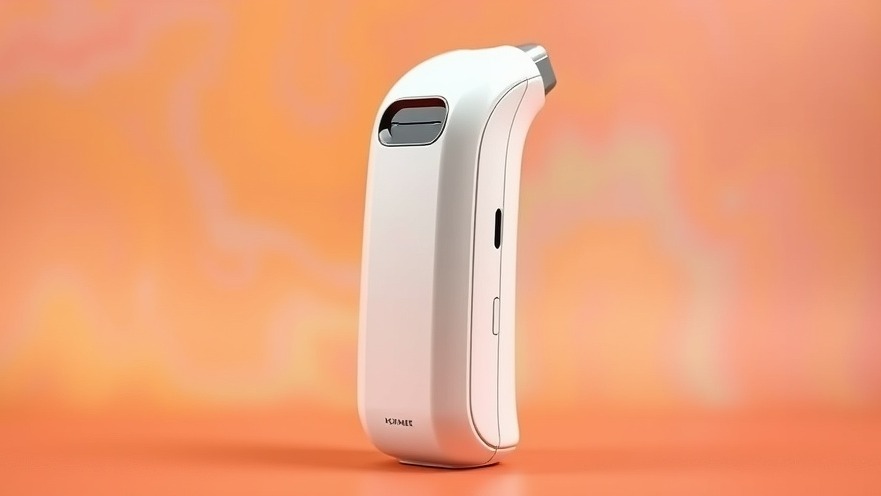
Revolutionizing COPD Management with Digital Inhalers
Chronic obstructive pulmonary disease (COPD) is a severe respiratory ailment that impacts millions of Americans and is linked with significant morbidity and mortality. With new technological advancements, particularly in digital inhalers, there's promise for improved patient outcomes. A recent study published in the Chronic Obstructive Pulmonary Diseases: Journal of the COPD Foundation offers a glimpse into how these devices might assist healthcare providers in managing COPD more effectively.
Understanding COPD and Its Challenges
COPD encompasses a set of lung diseases including chronic bronchitis and emphysema, often exacerbated by environmental factors such as air pollution and smoking. This condition affects over 30 million people in the U.S., making it the fourth-leading cause of death worldwide. The unpredictable flare-ups, or exacerbations, can accelerate lung function decline, diminish overall quality of life, and impair physical abilities, presenting substantial challenges for both patients and healthcare professionals.
How Digital Inhalers Work
The digital inhaler analyzed in the study tracks various parameters of the inhalation process, including peak inspiratory flow and inhalation volume. By aggregating this remote monitoring data, clinicians can gain insights into a patient’s respiratory status over time. As noted in the research, many patients showed significant decreases in airflow and inhalation duration approximately two weeks prior to experiencing an exacerbation. This information is crucial as timely intervention can mitigate the severity of flare-ups.
What Sets Digital Inhalers Apart?
Traditionally, patients would often wait until symptoms became severe before contacting their healthcare provider. Digital inhalers can empower both patients and providers by triggering earlier notifications when trends indicative of an exacerbation are detected. Dr. M. Bradley Drummond, the study's lead author, emphasizes that leveraging such technologies paves the way for enhanced management strategies and ultimately results in better health outcomes.
A Path Toward Enhanced Patient Engagement
The introduction of digital inhalers aligns with the broader trend of employing technology for improved patient-centered care. Engaging patients with tools that offer real-time feedback can lead to increased adherence to treatment plans. Furthermore, it opens up new channels of communication and monitoring, ensuring that healthcare providers are kept in the loop regarding their patient's condition.
Healthcare Implications and Future Directions
Healthcare practitioners, particularly concierge health providers, have a unique opportunity to adopt such advanced tools in their practices. By integrating digital inhalers into their patient management systems, they can offer more tailored feedback and adjust treatment regimens proactively. It's essential for practitioners to familiarize themselves with these technologies as they become a critical component of chronic disease management.
Conclusion: Embracing Change in COPD Treatment
As technology continues to evolve, the healthcare landscape is transforming. Digital inhalers represent a significant leap forward in the management of COPD, allowing for proactive identification of exacerbations and enhanced patient outcomes. For healthcare providers looking to stay ahead, adopting these technologies may be pivotal in reducing hospitalizations and improving the quality of life for their patients. Embrace the change, and consider how digital solutions could fit into your practice.
 Add Row
Add Row  Add
Add 






Write A Comment